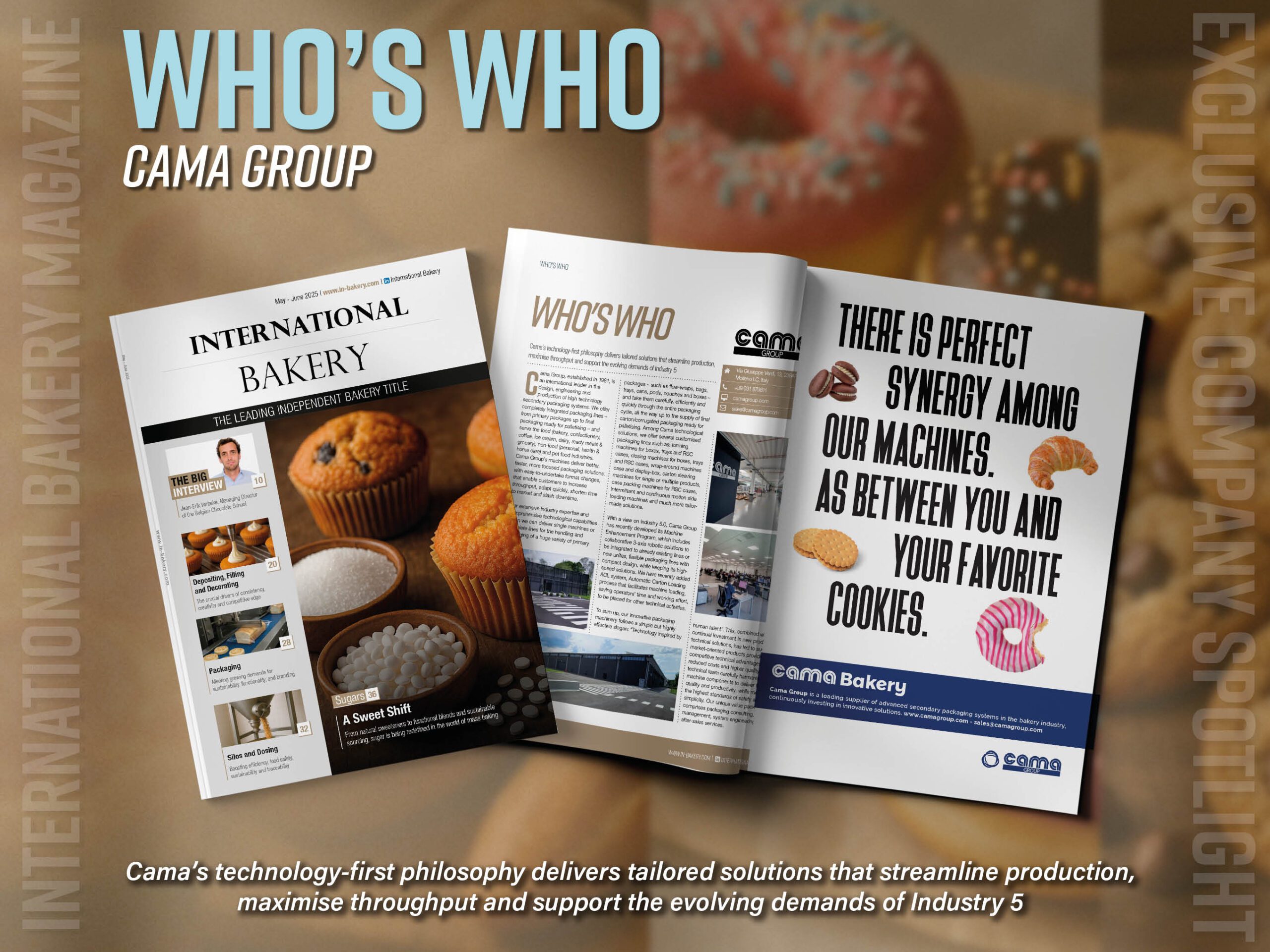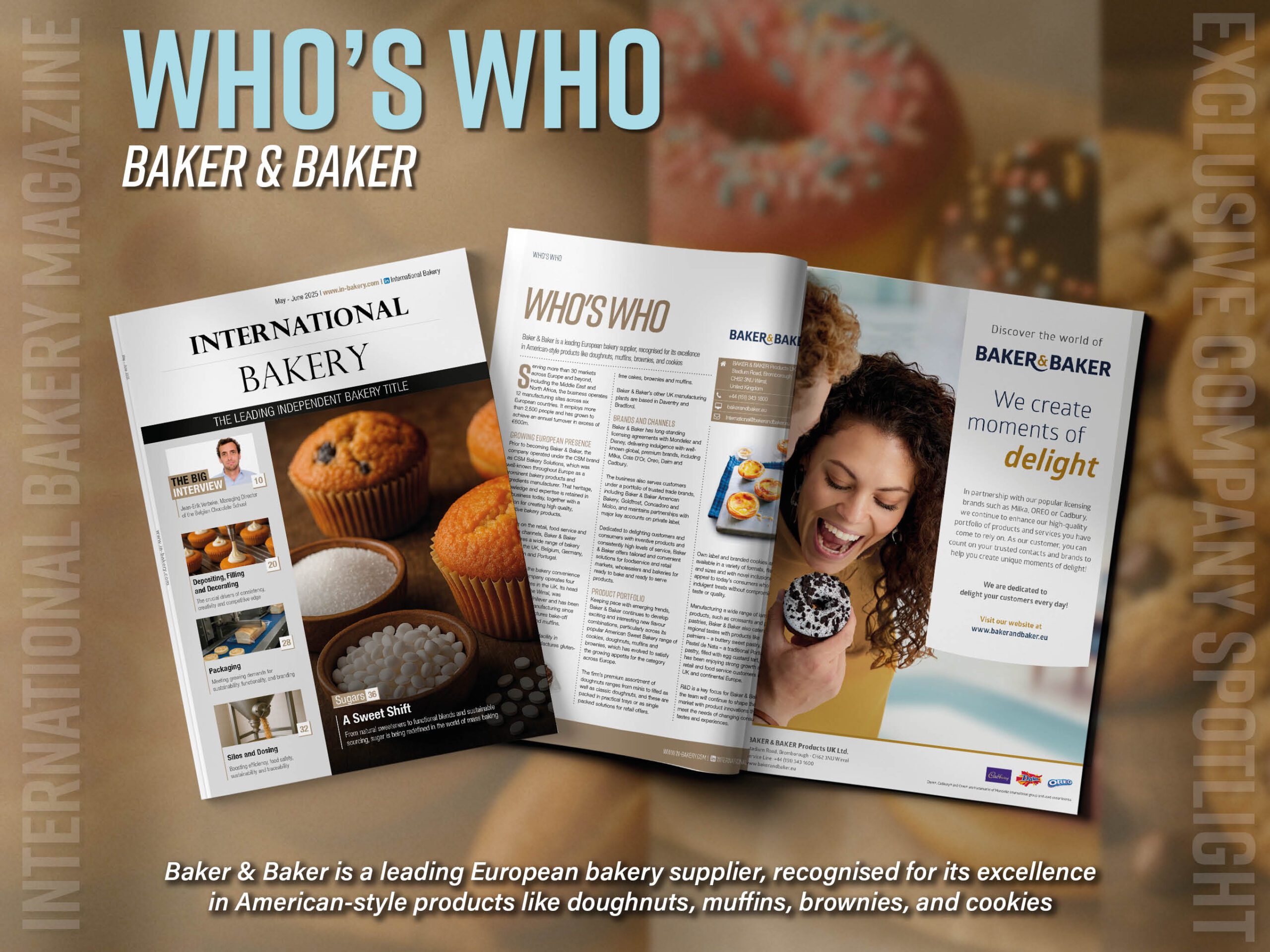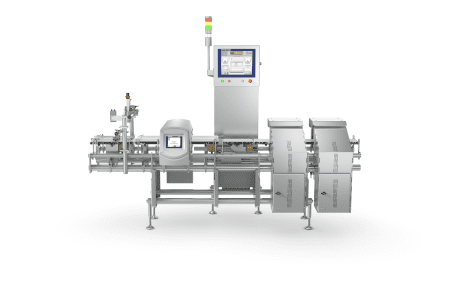Manufacturers need the right equipment to help navigate them out of sticky situations. The latest conveying technology is doing this and more, writes Managing Editor Rebecca Spayne
Bakery manufacturers are posed with a whole host of technical challenges when conveying bakery products; from managing the moisture content and humidity to product fragility and damage-prone goods, the challenges can be complicated and call for conveyor systems that can deal with them accordingly. Conveyor systems are being designed to take into account the needs of manufacturers, which include hygiene, safety and flexibility, as easy operation, maintenance and cleaning are becoming more popular.
Conveyors occupy multiple roles
Conveying systems occupy a wide range of roles outside of simply conveying products around the production facility. The variety of materials, designs and notable features reflect the variety of these roles and how integral conveying is to bakery production. They can be used to assist with improving operational efficiency, the flow of production and baking.
Choosing the right conveyor belt is critical to nailing high-quality baked goods, and sometimes belts are challenged by issues during production. The growth in the health and wellbeing category, for example, has seen the rise in wholewheat, multigrain and specialty breads that have special requirements for handling and conveying. Artisanal breads with irregular shapes, crusty exteriors and seed inclusions are a particular challenge for conventional conveyors to maintain the appearance and texture of the breads without damaging the crust.
Other products that give conveying systems a run for their money include soft doughs for croissants and pastries filled products like pastries containing creams or custards because they can be at risk of leaking their filling or deforming; cakes with toppings and decorations that can be delicate; and other fragile items spanning meringues and cookies. Gluten-free baked goods like breads and cakes have a unique formulation due to the absence of gluten and consequently are more prone to crumbling, sticking or spreading.
On the question of common technical challenges when conveying bakery products, Marko Leber, Global Product Manager for Food Belts, IPCO said: “Continuous baking requires a conveying medium that remains stable during the baking process, provides the thermal conductivity necessary to achieve consistent baking quality and enables the clean release of the baked product.” He explained “The physical form of the steel belt makes it ideally suited to this application, something borne out by the fact that 2025 will mark the 100th anniversary of the first steel bake oven belt.”
The longevity behind such a belt can be explained by the advantages it offers: “The thermal properties of a steel belt make it ideal for conveying products through bake ovens, where temperatures can reach as high as 400 °C. The belt remains flat and stable, provides excellent thermal conductivity for good baking performance and consistent product quality, and delivers clean product release, ensuring high standards of product quality.”
Marko went on to explain that there are technical challenges outside of conveying products – which can include the conveyor belts themselves. “A steel bake oven belt must run straight and true if it’s to deliver a consistent bake quality and this depends not only on the quality of the belt but also on the associated components that make up the conveying system as a whole,” he added. “For instance, if the belts sides are ‘wandering’, this can cause the belt to come into contact with the structure or another rigid object, resulting in burrs, a clear sign that something in the system is not operating as it should.
“This can be caused by drums, idlers, skid bars or break points that are dirty, worn or incorrectly adjusted. Or it could be uneven temperature across the width of the belt width. All can be resolved through cleaning, replacement or adjustments.”
Other warning signs include wavy belt edges, “another indication of side wandering or uneven temperature in the oven,” explained Marko. “They can also be a symptom of uneven pressure from the belt cleaner or scraper, or a belt scraper that is wider than the belt itself.”
Components must, therefore, be set up correctly. “Examples of this include making sure that terminal drums, rollers and skid bars are aligned horizontally and at right angles to the centre line of the longitudinal axis of the oven line. Checks should also be made to ensure that terminal drums and all rollers are rotating freely, and the tension device is functioning correctly,” he said.
Hygiene requirements
At the international bakery trade show iba in Munich, which ran in October 2023, Rotzinger Group exhibited its Hygienic Conveyor and Robot with an Integrated Buffer which was launched in response to greater requirements for hygiene and stringent food safety regulations. Requirements for equipment to be more hygienic, whether this is through sanitary materials and belt surfaces or designing systems to be easy to access and clean, is nothing new, although this focus on upholding stringent hygiene requirements has intensified in recent decades, driven by increased scrutiny from consumers and customers, particularly retailers, and stringent regulation.
As well as reflecting a greater need for compliance with stringent food safety regulations, more specifically in Europe, Rotzinger presented a Robot with an Integrated Buffer to bring together flexibility, compactness and ease of operation. “Our Hygienic Conveyor for dry cleaning and Robot with an Integrated Buffer have been specifically designed to tackle the escalating concerns regarding efficiencies and heightened sanitary requirements in food production,” stressed Christian Vouillamoz, Product Manager, Rotzinger Group in a press release. “With their intuitive controls and streamlined design, these solutions aim to enhance productivity and optimise operations.”
A Rotzinger spokesperson I met with at iba echoed the hygiene requirements driving this solution, and explained this conveyor was the result of collaboration with a Swiss bakery, a customer: “We developed this kind of conveyor with them together, as our previous machine did not meet the same hygiene standards, and our customer informed us of this,” they explained. “The aim was to have a conveyor that is easy to clean and maintain.”
The spokesperson stated that from experience, hygiene requirements can differ depending on the bakery – as some employ methods such as baking potential bacteria in products away in the oven – but mould remains a major concern. “This was one of the greatest fears of our customer,” added the spokesperson. “Ensuring you can easily clean equipment and the conveyors on average will become cleaner is a really important step in reducing the risk of mould growing.”
Easy cleaning and maintenance, the main features of the conveyor, was achieved by creating a foldable belt and bevelled or rounded horizontal surfaces designed to prevent the accumulation of dirt particles and crumbs. Designing the side panels to no longer run horizontally but instead be inclined at 45 degrees enabled easier shedding of product residue.
Close collaboration with customers
There were other notable features that strove to address other issues manufacturers face when conveying products, more specifically the Swiss bakery customer they worked with. “This design is toolless where possible, as this can be a safety issue,” said the spokesperson. “We’ve also ensured high hygiene standards by enabling the operator to remove the rollers to be cleaned, the belt can be taken out as well. You don’t need to dismantle the whole solution to clean parts.”
The challenges faced by the Swiss bakery customer who worked closely on Rotzinger to develop this solution required tweaks to the design. “The drive station previously was narrower, which meant we had no access to it,” they explained, adding: “We were not able to flip up the belt supporting plates. We could flip up the head section, but this was relatively small and we didn’t have enough space to loosen the belt and gain access to the structure. These were the main concerns of our customer and we’ve been able to meet their needs with the redesign of our equipment.”
This eye on continuous improvement was not confined to the Hygienic Conveyor Rotzinger showcased at iba, but included their other conveyor models, too. This point about accessibility recurred in my conversation with the spokesperson – leading me to ask him if he believes this is becoming more commonplace with new bakery equipment today.
“At the moment, I think we are leading the way in this, and others are seeing this and using it as inspiration,” he said. “The collaboration with the Swiss bakery customer showed that they had their own particular methods of cleaning equipment, and they needed a solution that could support that.” He explained that varying perspectives from engineers, sales and bakers all need to come together to work on a solution. “When you figure it out together, you can develop solutions such as this conveyor, which is beneficial for both us and the customer.”
The robot was partly in response to growing demand for production efficiency while manufacturers combat rising prices in energy and raw materials. “Demareux, which belongs to our Group, worked together with ABB, the developer of the original patent for Delta robotics back in the 1980s,” said the spokesperson. “They have a wealth of knowledge around grippers, robotics, and the whole process.
“We’ve had some success with these robots as you can grip bakery products such as bread using mechanical grippers to pick and place it, reorient it, or even place it directly in a packaging line.”
Using lasers to support hygiene
“Despite the inherent cleanability of the steel belt, it can still be a dirty and time-consuming process,” stated Marko. “But regular cleaning is also the most important maintenance task there is in relation to bake oven belts.”
Conventional cleaning methods use chemicals, dry ice, baking release agents or detergents and an overall large amount of manual input, Marko said. “Thorough belt cleaning will require a halt in production, whatever method is used, and in most cases not only to the belt being treated but to nearby lines too. This makes cleaning a costly process, one in which time really is money.”
This need for a solution that upholds rigorous cleaning while reducing disruption to production inspired the development of a laser-based belt cleaning system. “The laser head is installed above the belt and the beam focused on an area approximately 75mm wide,” he added. “As the belt travels under the laser, carbon deposits are burnt off and collected by a vacuum system. Once the strip has been cleaned along the full length of the belt, the laser head is moved across to the next section.”
Marko summarised: “The key benefit is speed; a typical bake oven belt can be cleaned in a day, which is significantly faster than cleaning by hand or using dry ice, which can take two days or more. The other major benefit is that this is a much cleaner process than other technologies and in most cases will not require adjacent lines to be closed down.”
Cleaning-In-Place
The conventional conveyor that may come to mind when discussing conveying within a factory may be the belt that carries bakery products from one production area to another; but tubular drag conveyors, for instance, handle bulk materials by sliding them through stainless steel tubes. “Tubular drag conveyor systems gently move product through a sealed, enclosed tube using a drag cable and circular discs pulled through on a loop, so are ideal for delicate items,” explained Del Williams, Technical Writer, Cablevey Conveyors.
These conveyors are being influenced by increased demand by manufacturers to Clean-In-Place (CIP). “In a wet CIP process, the system is flooded with water, flushed, rinsed, cleaned and thoroughly sanitised,” added Del. This means potential allergens like nuts or gluten are dealt with accordingly as well as grains and cereals.
“Although the CIP process is very effective, streamlining its automation and simplifying the process for all of a facility’s tubular drag conveyors has been a priority for innovators in the industry,” he said.
Cablevey’s response was to create a mobile, ‘small cart’ with integrated water line hookups that can be easily taken to any tubular drag conveyor within a facility. “The cart is specifically designed to be a fraction of the size of similar carts on the market to facilitate mobility,” he said. “When the cart is in position and connected to water lines, the CIP process is automated and controlled by a PLC, reducing the need for manual labour and eliminating the risk of improper cleaning.”
The cart has also been designed to store and use pre-programmed CIP recipes to flush particular materials – such as cereals and grains – from the tubular drag conveyors before production. In doing so, there is less chance of an error and an operator can ensure greater repeatability, particularly beneficial for operators who may be unfamiliar with the equipment. “To facilitate food safety compliance, the smart cart also documents all critical CIP information such as water volume and temperature, chemicals used and cleaning time by date,” concluded Del.
Concluding thoughts
Tweaks in the design of conveying systems, whether small or large, represents the sensitivity of machine manufacturers to the requirements of their customers as continual technical challenges such as the stickiness of soft doughs or fragility of cookies and pressures from regulation and stringent hygiene requirements calls for innovation and forward-thinking. Hygiene and safety lead the way as major concerns influencing the design of conveyor belts.
Read more latest industry news and developments in our free to download magazine.
Never miss a story… Follow us on:
International Bakery
@int_bakery
@Bakeryint
Media contact
Caitlin Gittins
Editor, International Bakery
Tel: +44 (0) 1622 823 920
Email: editor@in-bakery.com






